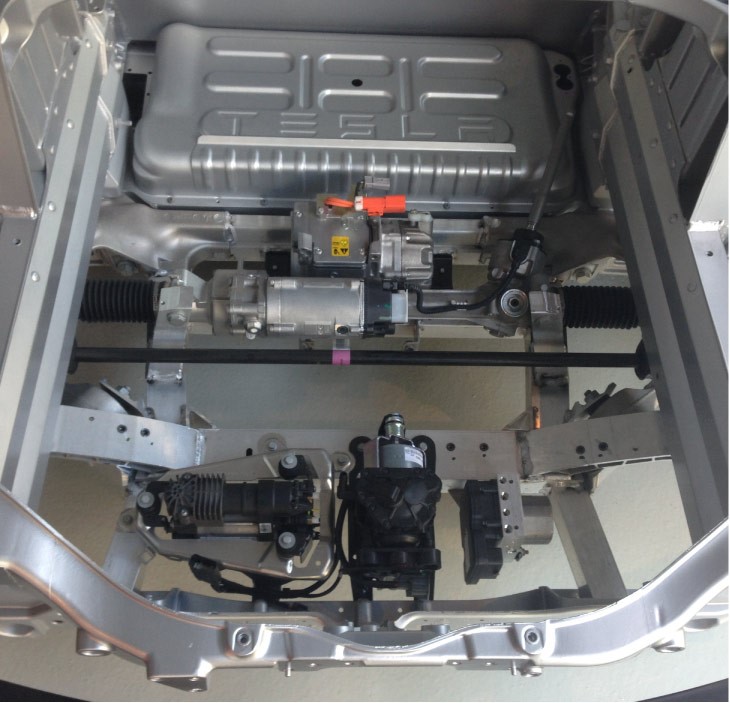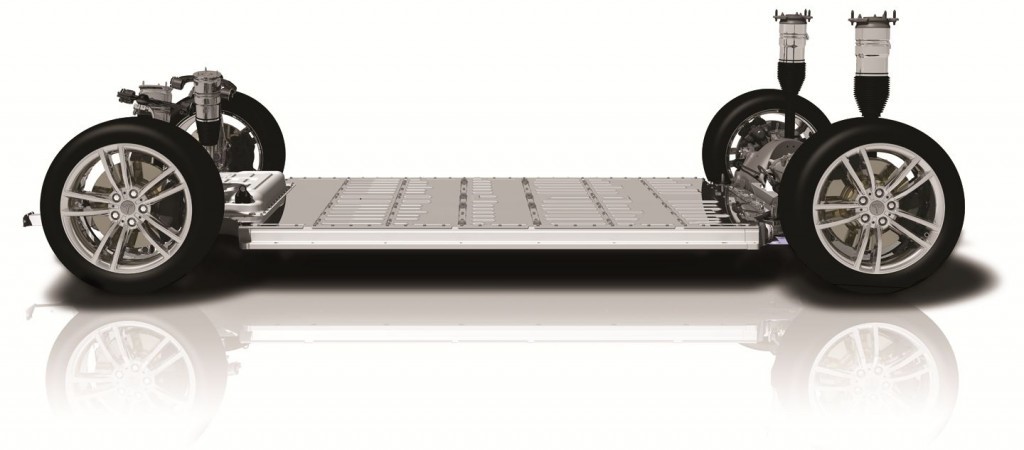Breaking Energy, Oct. 2, 2014 (.pdf)
Electric Vehicles today are considered to be more expensive to purchase than their Internal Combustion Engine counterparts. But the purchase price of EV’s versus ICE vehicles tells an incomplete story about the comparative costs.
While none of the EV’s on the market today are cheap, they are competitively priced for their class of vehicle. The Tesla Model S is the best equipped and most expensive EV on the market, as a luxury sedan it competes with the Mercedes Benz S-Class, BMW 7 Series, and Porsche Panamera all of which are in the $70,000 – $90,000+ price range. The Chevy Volt plug in hybrid EV has an MSRP of $35,000, and the Nissan LEAF EV lists at $29,800, comparable to cars of similar size and features.
EV’s are much simpler mechanically than ICE vehicles with far fewer parts and requiring less maintenance. The perceived expense of EV’s is almost entirely in the cost of batteries and as battery prices come down with expanding production then the overall cost of EV’s will come down as well. Electricity is much less expensive than gasoline or diesel so powering an EV is much cheaper than filling up an ICE vehicle.
The Tesla Model S has remarkably few mechanical parts, while combustion vehicles have thousands of discrete parts that make up the engine, fuel system, transmission, drive train and exhaust. Tesla displays a stripped down Model S in their stores with just the mechanical parts installed, for anyone accustomed to complex mechanical aspects of cars it is a surprising contrast. Despite the sophistication of the engineering, the final package is remarkably simple and implies that costs can be reduced as manufacturing expands and matures.
Tesla Model S Chassis from Rear (L) Motor, Inverter and Gearbox (R), photo by authorThe electric motor is not much bigger than a watermelon and is matched up with the DC-AC inverter and single speed gearbox in a very compact space between the rear wheels. This setup provides direct power to the rear wheels and also handles the regenerative braking. The battery is wide and flat and covers the entire bottom of the frame between the four wheels. The battery and inverter are liquid cooled with a reservoir and pump. Under the front side of the car are the rest of the mechanical components: vacuum pump for air suspension, ABS compressor, steering motor, AC compressor and double wishbone suspension. Along with conventional brakes and wheels, that is effectively all the parts that make the car go. There are large trunks for storage in both the front and back of the car and the interior is very roomy with comfortable seating for 5.
Tesla Model S Chassis Front Showing Pumps, Compressors and Liquid Coolant Reservoir, photo by authorBesides these mechanical parts there is a Linux based computer system with 17” touchscreen on the dash that controls basically everything; from the AC to the radio, windows, locks and GPS. In many ways the Tesla Model S could described as a smartphone on wheels with a motor. Much of the maintenance required on the Model S is software based such as updates, reboots and firmware upgrades. The auto mechanic of the future will need to know as much about IT as wrenches and grease.
The single biggest cost component on the Model S and all EVs is the battery pack. Tesla does not reveal precise costs on their batteries but there is a cottage industry of analysts trying to determine what those costs are. Some estimates in the media have placed the cost around $400 per kWh, or $34,000 for the 85 kWh version while others estimate the cost are well below $200 per kWh. In an interview with Barron’s online Telsa CEO Elon Musk claimed that improvements will bring the cost of the Model S battery to $10,000-$12,000, below $200 per kWh. An interesting analysis at Green Car Reports estimated Tesla’s cost conservatively at $171 per kWh with prices collapsing.
Tesla recently announced that they will be constructing the world’s largest lithium-ion battery factory in Nevada, named the Gigafactory. Planned production at the Gigafactory of battery cells by 2020 will exceed the entire industry’s production in 2013. Tesla estimates that cost per kWh will be reduced by over 30%. The Gigafactory will also have facilities for recycling batteries.
It is known that Tesla developed their own proprietary lithium-ion battery architecture and it has proven to be far ahead of the competition in cost and performance. While most of the EV industry chose to go with large battery cells, Tesla went against the grain to use small cylindrical cells manufactured by Panasonic (their partner in the Gigafactory) for laptop computers that are cheaper, more energy dense, and safer (because they contain less energy per cell). Tesla completely redesigned the battery packaging to make it simpler and reduce manufacturing costs. A liquid cooling system was developed that helps to maintain cell life but is also an important safety feature as it helps to dissipate heat if any one cell were to catch fire and prevents the fire spreading. The smaller, safer cells allowed Tesla more flexibility in arranging the battery pack enabling them to create the large slab that covers the undercarriage rather than bulky batteries that eat into interior space.
Tesla Chassis Showing Battery, photo by TeslaReplacement costs for EV batteries remains somewhat murky. Most EV’s are new enough that owners have not been faced with the issue yet. Conventional wisdom is that the batteries will retain 70%-80% of their storage capacity when retired from automotive use and will still have market value for stationary applications. Batteries can also be reconditioned by replacing individual faulty cells. Battery swap services, of which Tesla advertises but has not brought to market yet, offer compelling new business model opportunities where batteries are leased or paid for via service contract and simply swapped out as needed without requiring a large outlay of cash by the vehicle owner. The Tesla Model S battery can be swapped out in 90 seconds. Ultimately the materials in lithium-ion batteries can be completely recycled and remanufactured, but the business models for battery replacements are still emerging.
One unambiguous cost is the cost to charge an EV which is a fraction of filling up a conventional car with gasoline or diesel and presents one of the most compelling arguments for consumers to switch to EV’s. The US Dept of Energy uses an eGallon to represent the electrical equivalent of one gallon of gasoline and rates an eGallon as roughly one-third the cost of gasoline. Electricity prices vary across the country and by time of day but they are far less volatile than gasoline prices which are tied to international markets and geopolitical events.
Tesla offers free charging at their Supercharger stations for all of their customers for the life of their cars which sweetens the deal, especially compared to the competition Mercedes Benz S550 which gets 19 miles to the gallon and costs roughly $1900 in fuel to drive 10,000 miles.
Maintenance requirements on EV’s are much lower than ICE vehicles saving owners significant time and expense. Though combustion engines have become much more reliable in recent years they are still very complex machines with many fluids and moving parts that wear and eventually need maintenance. A cursory review of engine components and common ICE maintenance includes: oil changes every 3000-5000 miles, transmission fluid must be checked and changed at 100,000 miles, radiator coolant must be checked, spark plugs and wires, timing belt, muffler and exhaust system, catalytic convertors, fuel pump, alternator, clutches on manual transmissions, and of course regular trips to the gas station. EV’s eliminate all of these parts and reduce maintenance costs and time dramatically for the owners. EV’s share brakes and tires in common with ICE vehicles, but the regenerative braking saves much wear on EV brakes extending their lives. Increased computerization of EV’s means a greater reliance on software and increased potential for computer glitches bringing a new category of maintenance to EV’s and even raises the potential for them to be hacked by criminals, something to be aware of.
In the final analysis, EV’s offer a compelling cost saving argument over conventional ICE vehicles, even if all the advantages are not available today. The single biggest cost factor holding up EVs is battery costs, but these costs project to fall as manufacturing expands. On mileage and maintenance costs the advantages of EVs are already clear and present today. Charging infrastructure needs to and will continue to expand, but in these early days there are gaps in coverage. An industry standard for DC high speed charging will greatly facilitate a wide expansion in convenient charging locations for all EVs.


